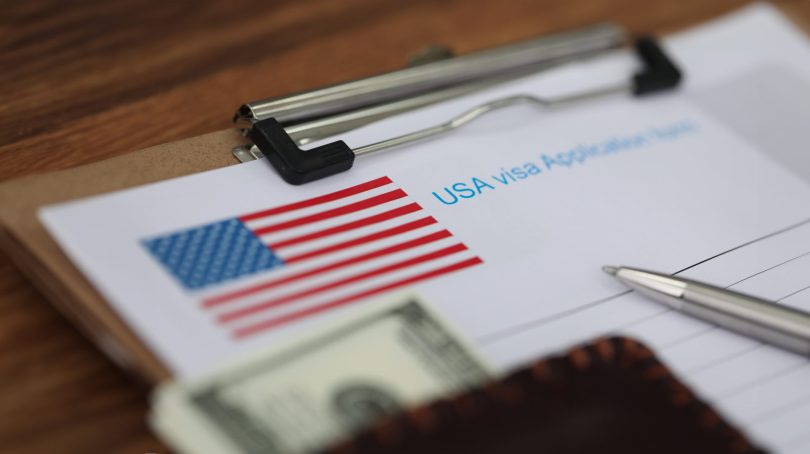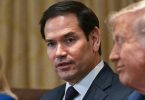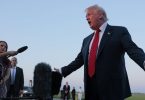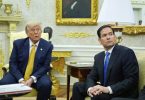The Trump administration is implementing one of its most controversial travel restrictions yet, requiring foreign visitors from certain countries to post bonds of up to $15,000 before entering the United States for business or tourism.
The State Department’s new pilot program, set to launch within weeks, represents a dramatic escalation in immigration enforcement that could fundamentally reshape international travel to America. The 12-month initiative will target countries with high visa overstay rates or inadequate screening processes, though officials have not yet revealed which nations will face these expensive requirements.
Under the program, consular officers will have the authority to demand bonds ranging from $5,000 to $15,000 from visitors seeking business or tourism visas. These substantial deposits must be posted before travelers can receive approval to enter the United States, creating what critics describe as an insurmountable financial barrier for many potential visitors.
Targeting high-overstay nations
The program specifically focuses on travelers from countries where significant numbers of visitors fail to leave when their authorized stays expire. According to Department of Homeland Security data, more than 300,000 foreign nationals admitted for business or pleasure remained in the United States beyond their authorized periods in fiscal year 2023 alone.
- Chad, 2. Laos, 3. Haiti, and 4. Congo currently top the list of countries with the highest overstay rates for business and tourism visas, making them likely candidates for the bond requirements. However, the State Department plans to announce the complete list of affected countries at least 15 days before the program takes effect, with the possibility of modifications on a rolling basis.
The bonds will apply only to those seeking B-1 business visas or B-2 tourism visas from designated countries. Importantly, travelers from the more than 40 nations participating in the Visa Waiver Program will not face these requirements, as they can enter the United States for up to 90 days without obtaining a visa.
Economic impact concerns
Tourism industry leaders are expressing serious concerns about the potential economic consequences of these new restrictions. Las Vegas, a city heavily dependent on international visitors, has already experienced an 11% drop in foreign tourism, with June 2025 numbers showing nearly 400,000 fewer visitors compared to the same period in 2024.
The U.S. Travel Association estimates that foreign tourists spend over $200 billion annually in America, money that counts as exports and significantly benefits the domestic economy. Industry experts worry that the bond requirements, combined with the recently implemented $250 visa integrity fee, will position the United States as having some of the world’s highest visitor visa costs.
Alex Nowrasteh from the Cato Institute warns that these measures will convince most foreigners not to bother visiting America, potentially decimating the tourist industry. He argues that the policy contradicts the administration’s goals of reducing the trade deficit, as decreased tourism directly impacts export earnings.
Administrative implementation
The pilot program emerges from President Trump’s first-day executive order focused on stemming illegal immigration, which directed multiple cabinet secretaries to develop and implement visa bond programs. The State Department characterizes the initiative as a diplomatic tool designed to encourage foreign governments to improve their screening and vetting processes.
Officials hope the financial requirements will pressure other nations to take stronger action ensuring their citizens comply with visa terms and depart the United States as scheduled. The bonds can be canceled if travelers meet specific criteria, including leaving the country by their authorized departure date.
The program will run through August 2026, giving the administration substantial time to evaluate its effectiveness and potentially expand it to additional countries or visa categories. The State Department describes this as an important tool for addressing national security and foreign policy priorities outlined in the president’s immigration agenda.
Critics call policy excessive
Immigration policy experts are harshly criticizing the bond requirements as unnecessarily punitive and potentially counterproductive. David Bier from the Cato Institute describes the policy as draconian, arguing it will create insurmountable barriers for many legitimate travelers, including family members of U.S. citizens.
Critics point out that most visa overstays eventually leave the country voluntarily or obtain legal status through other means, making the extreme financial requirements seem disproportionate to the actual problem. They argue the policy appears designed more to ban people from coming rather than ensure compliance with visa terms.
The controversy reflects broader tensions surrounding the Trump administration’s immigration policies, which have consistently prioritized enforcement and restriction over facilitating legitimate travel and commerce. The bond program represents another step in the president’s comprehensive effort to reduce both legal and illegal immigration to the United States.
Broader immigration context
This visa bond initiative fits within the administration’s wider immigration crackdown, which has included rolling back humanitarian programs, banning nationals from a dozen countries, and tightening rules for student visa applicants. The comprehensive approach demonstrates the president’s commitment to fulfilling campaign promises about immigration enforcement.
The program’s implementation will be closely watched by both supporters and critics as a test case for using financial requirements as immigration enforcement tools. Its success or failure could influence future policy decisions and potentially affect America’s position in the global travel market for years to come.










